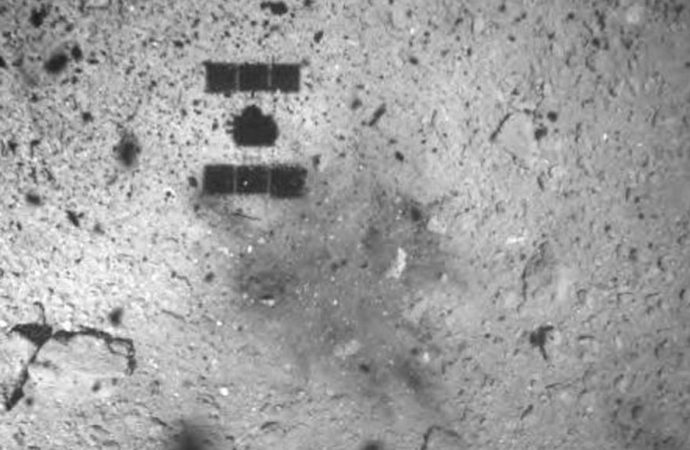Planets, asteroids and Arrokoth were the focus of new discoveries
Source: Science News
From asteroids to exoplanets, spacecraft are leaving no space rock unturned. While agencies in China, India and Israel made headlines with missions to the moon, here are some other places that space probes scouted in 2019.
Zoom and enhance
Touring Pluto in 2015 may have been New Horizons’ main event, but flying by what used to be called Ultima Thule was an awesome encore. The space probe zipped by this Kuiper Belt object, now called Arrokoth, on New Year’s Day. Scientists were on the edge of their seats as the probe snapped pictures and sent higher- and higher-resolution images over several weeks, revealing the visage of Arrokoth to look like an elongated blob, then a snowman and finally a pair of lumpy pancakes. Uncovering the origins of Arrokoth’s awkward shape may lend insight into the early stages of planet formation.

I spy exoplanets
NASA’s Transiting Exoplanet Survey Satellite, or TESS, racked up eight exoplanet finds in its first few months of observation. That initial cache included some weirdos, such as a planet that is about as dense as pure water and a “lava world” known as LHS 3844b that sizzles at about 540° Celsius. TESS has since discovered a new type of exoplanet called an ultrahot Neptune, which appears to be a fluffy gas giant in the process of stripping down to its rocky core.

Asteroids to go
The Japan Aerospace Exploration Agency’s Hayabusa2 is expected to become the second spacecraft ever to bring a bit of asteroid back to Earth, after the original Hayabusa probe returned with a souvenir from the asteroid Itokawa in 2010. Hayabusa2 touched down on the asteroid Ryugu in February to fetch a sample from the asteroid’s surface. Then, to get a deeper sample, Hayabusa2 fired a copper projectile at Ryugu to punch a crater into the asteroid. The probe then ducked down to snag some rubble excavated from the interior. Scientists won’t know exactly how much of Ryugu was collected until Hayabusa2, which started its journey home on November 13, arrives at Earth in late 2020.
Another sample-return mission, NASA’s OSIRIS-REx, is still orbiting its asteroid. When the spacecraft first arrived at Bennu in December 2018, observations unveiled a rugged surface littered with boulders — bad news for a probe designed to navigate more beachlike terrain. Using OSIRIS-REx’s detailed mapping of Bennu from orbit, NASA selected a site for sample collection in the asteroid’s northern hemisphere. Bits of Bennu, to be returned in 2023, may reveal whether a similar asteroid could have delivered to early Earth a molecular starter pack for life.

Meanwhile, on Mars

InSight arrived on the Red Planet in November 2018, and the rookie lander may have already captured the first recording of a Marsquake. Unlike tremors on Earth, underground rumblings on Mars are thought to result from the planet contracting as it cools. Studying such seismic signals could help scientists better understand the structure of Mars’ deep interior.
While InSight had its ear to the ground, the veteran Curiosity rover was measuring the consistency of a Martian mountain. As Curiosity scaled Mount Sharp, accelerometer readings indicated surprisingly loose rock beneath the rover’s wheels — suggesting that winds formed the mountain by sweeping sediment into a giant pile.
Source: Science News

































Leave a Comment
You must be logged in to post a comment.